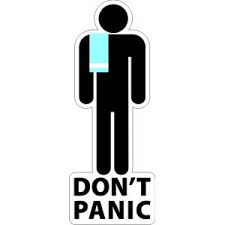Press release before publication. Again.
And it seems to plague stories about dishrags or dishcloths or sponges or whatever they’re called; those things used to wipe up stuff in the kitchen.
In 1995, the front-page of Toronto’s Globe and Mail screeched, “Warning: your kitchen dishrag is a killer. … you probably handle an unimaginably dangerous collection of harmful bacteria" while going about your  kitchenly chores, and that "90 per cent of food-related illness in the home could be prevented by using paper towels when preparing foods, especially meats."
kitchenly chores, and that "90 per cent of food-related illness in the home could be prevented by using paper towels when preparing foods, especially meats."
That was Dec. 1995. The paper describing the research was eventually published in 1997.
Today, Safefood Ireland sent out a strinkingly similar press release with strikingly similar flaws.
And the Irish Examiner went with a similar lede.
A total of 27% of household dishcloths were found to contain the raw meat bacterium E. Coli, in a recent study.
According to research from Safefood, listeria was also present on 14% of cloths analyzed by scientists.
The research shows that although one-third of consumers who re-use dishcloths clean them in bleach and almost one in four wash them by hand, neither method is effective at removing the germs that cause food poisoning.
Safefood is reminding people that cloths must be cleaned in a washing machine on a temperature of least 30 degrees or else boiled for 15 minutes to effectively kill germs.
I’m not sure of the validity of those statements: Safefood cites some research, but it doesn’t appear to have been published anywhere; and if it has, PR 101 would be to include the reference on the press release.
Instead the PR contained this:
References:
1. ‘Assessment of the ability of dishcloths to spread harmful bacteria to other kitchen surfaces and determination of the effectiveness of various dishcloth cleaning regimes’. safefood/Prof David McDowell; University of Ulster; Jordanstown
2. ‘The microbiological status or household dishcloths and associated consumer hygiene practices’. safefood/ Eolas International, 2011
There’s lots of research out there, but the information presented in this press release is difficult to assess. What is the quantitative difference between rinsing a cloth or sponge before use, and the dishwasher? Were the numbers derived from self-reported responses or actual observation (people lie)? Can the actual risk of cross-contamination from such cloths be modeled in a risk assessment?
When I use a sponge or dishcloth, I habitually rinse it first, which does not eliminate but may reduce bacterial loads. Dish clothes and towels get swapped out 1-2 times a day, and sponges go in the  dishwasher about every third day. When dealing with raw meat, the sponges or clothes are swapped out immediately. Pete Snyder makes similar recommendations.
dishwasher about every third day. When dealing with raw meat, the sponges or clothes are swapped out immediately. Pete Snyder makes similar recommendations.
The 1995 killer-dishrag story met the primary goal of its creators: to sell more sponges. Specifically, anti-bacterial sponges manufactured by 3M Co. of Minneapolis, Minn.
Dr. Charles P. Gerba, an environmental microbiologist at the University of Arizona in Tucson, was contracted by 3M to perform tests of household dishrags and sponges in five U.S. cities and compare the results to the 3M sponge. Dr. Gerba found about 100 times more bacteria in dishrags retrieved from households.
Then the public relations firm hired by 3M peddled the results, taking Dr. Gerba on a five-city tour to release the results. That was in Aug. 1995. Several stories appeared on the U.S. wire services. Why the Globe decided to run the story at the end of Dec. 1995 remains a mystery.
Some may argue the end justifies the means, that any message promoting the safe handling of food in the kitchen is good. Except that stories which overstate a risk have been shown to do more harm than good. It’s called the boomerang effect. If a message is oversold or overstated, people stop believing. With killer sponges, the message is more harmful than the bacteria; unless properly validated.
 My clothsline can usually be found with an abundance of hand (or tea) towels.
My clothsline can usually be found with an abundance of hand (or tea) towels.


 kitchenly chores, and that "90 per cent of food-related illness in the home could be prevented by using paper towels when preparing foods, especially meats."
kitchenly chores, and that "90 per cent of food-related illness in the home could be prevented by using paper towels when preparing foods, especially meats." dishwasher about every third day. When dealing with raw meat, the sponges or clothes are swapped out immediately.
dishwasher about every third day. When dealing with raw meat, the sponges or clothes are swapped out immediately.  documents, an adapter cord to hook my Mac computer up to a projector, computer, and an array of cords.
documents, an adapter cord to hook my Mac computer up to a projector, computer, and an array of cords. Police arrived, and an officer informed the driver he could make no demand for $120.
Police arrived, and an officer informed the driver he could make no demand for $120.